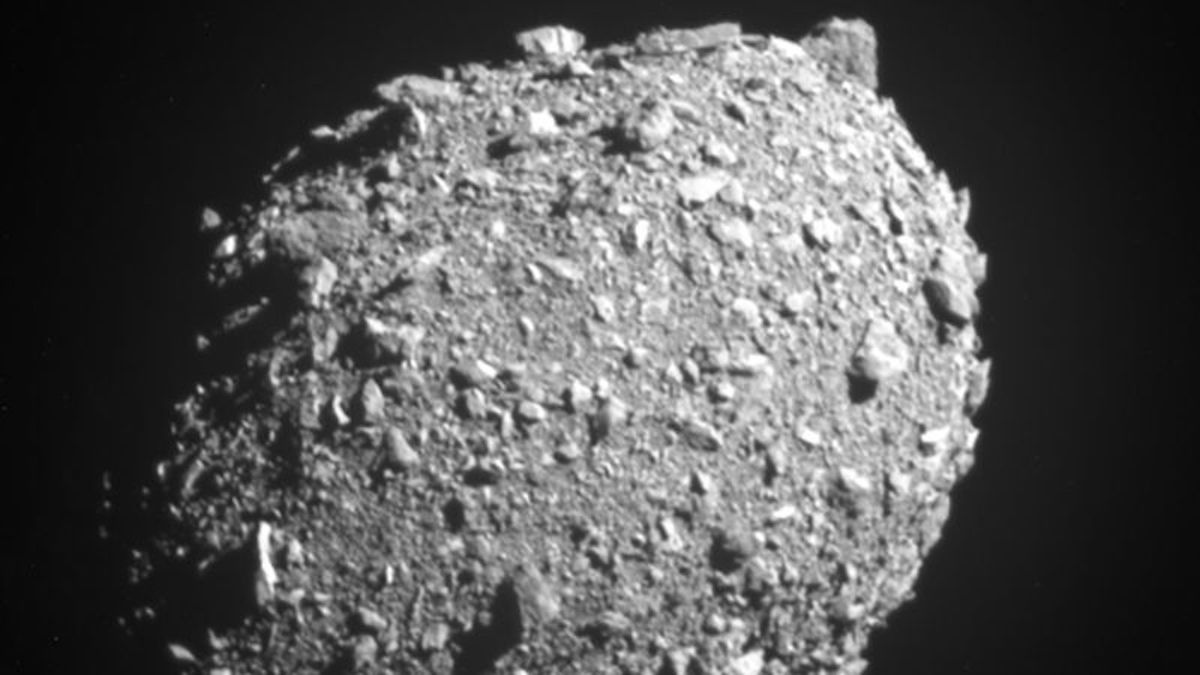Impressive image after the launch of NASA's Dart mission 0:50
(CNN) --
The DART, or Double Asteroid Redirection Test, mission successfully changed the trajectory of asteroid Dimorphos when NASA's spacecraft intentionally crashed into the space rock on Sept. 26, according to the agency.
The DART mission, a large-scale demonstration of diversion technology, was the world's first conducted in the name of planetary defense.
The mission was also the first time humanity had intentionally changed the motion of a celestial object in space.
Successful impact: NASA's DART mission successfully crashes a spacecraft into an asteroid for the first time
Before impact, Dimorphos took 11 hours and 55 minutes to orbit its largest asteroid, Didymos.
Astronomers used ground-based telescopes to measure how Dimorphos's orbit changed after the impact.
Now it takes Dimorphos 11 hours and 23 minutes to go around Didymos.
The DART spacecraft changed its orbit for 32 minutes.
Initially, astronomers expected that DART would be successful if it shortened the trajectory to 10 minutes.
The Hubble Space Telescope captured an image of debris being ejected from Dimorphos's surface 285 hours after the impact on October 8.
“All of us have a responsibility to protect our home planet.
After all, it's the only one we have," said NASA Administrator Bill Nelson.
advertising
“This mission shows that NASA is trying to be ready for whatever the universe throws at us.
NASA has shown that we are serious as defenders of the planet.
This is a watershed moment for planetary defense and for all of humanity, demonstrating the commitment of the exceptional team at NASA and its partners around the world."
Neither Dimorphos nor Didymos pose a threat to Earth, but the double-asteroid system was a perfect target for testing deflection technology, according to the DART team.
"For the first time in history, humanity has changed the orbit of a planetary object," said Lori Glaze, director of NASA's Planetary Science Division.
"As new data comes in every day, astronomers will be able to better assess how a mission like DART could be used in the future to help protect Earth from colliding with an asteroid if we ever find one headed our way."
The DART team continues to collect data by observing the double asteroid system, and the orbital measurement may become more accurate in the future.
The next launch attempt for Artemis I could take place until the end of this year
The team is now focusing on measuring how much momentum was transferred from DART to Dimorphos.
At the moment of impact, the spacecraft was moving at about 14,000 miles per hour (22,530 kilometers per hour).
Astronomers will analyze the amount of rocks and dust thrown into space after the impact.
The DART team believes that the recoil of the plume "substantially enhanced" the spacecraft's thrust against the asteroid, not unlike the release of air from a balloon propelling it in the opposite direction, according to NASA.
Astronomers are still investigating Dimorphos's surface and how faint or strong it is.
The DART team's first look at Dimorphos, provided by DART before the accident, suggests that the asteroid is a mass of debris held together by gravity.
"DART has given us some fascinating data on the properties of asteroids and the effectiveness of a kinetic impactor as a planetary defense technology," said Nancy Chabot, DART coordination lead at Johns Hopkins University Applied Physics Laboratory in Laurel, Maryland.
"The DART team continues to work on this rich dataset to fully understand this first asteroid deflection planetary defense test."
Images continue to come back from the Light Italian CubeSat for Imaging of Asteroids, or LICIACube, which was provided by the Italian Space Agency and tagged as a robotic photojournalist on the DART mission.
In about four years, the European Space Agency's Hera mission will also fly over the double asteroid system to study the crater left by the collision and measure the mass of Dimorphos.

